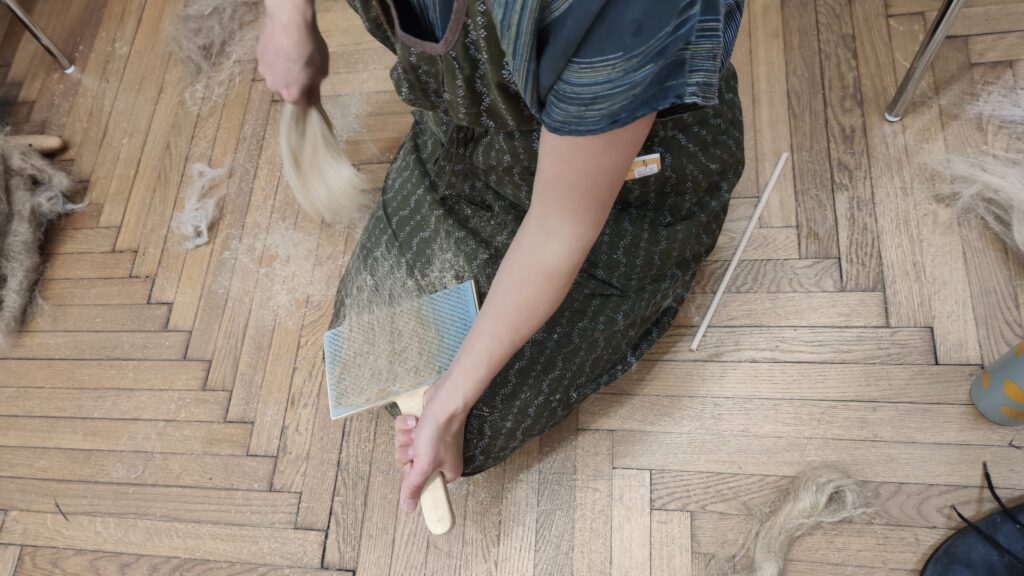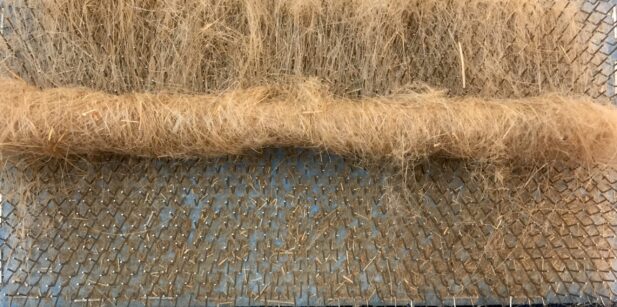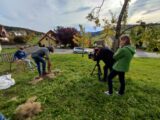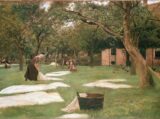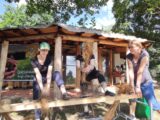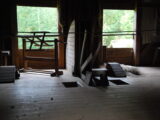Spinning flax Part 1 1 As soon as you drop the word "flax" in a spinning forum, a collective wince goes through the ranks. The fine plant fibre has a reputation for being complicated and difficult to spin. This is right and wrong at the same time. With a few simple tricks, any reasonably experienced spinner can quickly produce an acceptable flax thread. However, the highest quality and fineness requires perfect material, a lot of practice and good fibre preparation. In several parts I would like to introduce you to the basics of flax spinning.
The first hurdle for hand spinners is probably to get good fibre material. Most fibre traders only sell flax as card sliver, which is not long flax but the much shorter tow. The advantage of this processing is that the spinning technique hardly differs from that of wool fibre. Unfortunately, tow card slivers are often really waste material and come with a lot of woody residue, very short fibres and vast amounts of dust. This not only spoils the spinning pleasure, it also prevents really beautiful results.
Getting hold of nice long flax is usually rather difficult. In German-speaking countries, I only know of Egon Heger from the flax shop, who sells small quantities of beautifulyl hackled flax. Otherwise, the spinners can only grow their own or buy antique flax like we distribute in the Berta's Flax Project. But even the most beautiful antique or new flax needs some care before it can be spun to produce very fine threads.
The first thing I do when I open a flax plait is to shake it out thoroughly. The coarsest shavings and dust fall out this way. Then I divide the plait into smaller units - so-called "handfulls".
Card instead of hackle: Long live improvisation
In the absence of original hackles in various gradations, I use my coarsest hand cards for the next step. I let the handful slide over one of my cardes again and again, making sure to hold the strick firmly. Shorter and medium lengths of fibre remain in the card. Only the very long hair is kept in the hand. After two passes, the long flax should be much softer and very clean. I pull the longest fibres on the card downwards and sort them separately. What remains of the very short material on the carding surface is used as a "tow rolag".
In this way, I produce three fibre qualities: very uniform long flax, which I spin from the distaff, medium fibre length, which I also process on the distaff or out of the towel, and the already mentioned tow rolags. These are also the first ones that I work with my participants in my flax courses.
Attention, when we do this work we produce not only great fibres but also an incredible amount of dust. It collects on the carde, on your lap, on the floor and also in our lungs. That's why it makes sense to do these preparation steps outdoors or with very good ventilation.
